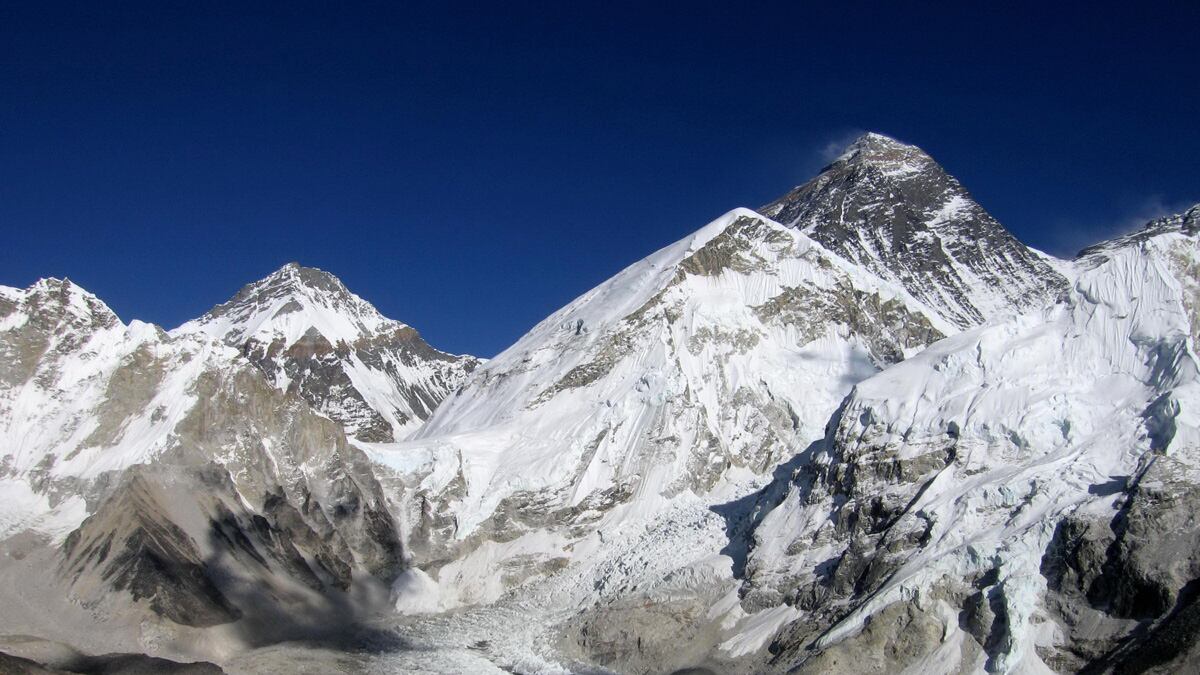When Wade Davis, the noted anthropologist, writer, and filmmaker, was 11 years old, he was carpooling to school with his math teacher, who lived in the same Canadian town. The teacher had fought in World War I. “I was completely enchanted by the war,” Davis, now 58, recalled in a recent interview, “and I always pestered him about it. And one day he was in a bad mood or something,” and he snapped and pulled over. “And for about 10 minutes he told me exactly what he had seen at the Somme. And then he said, ‘Son, I did that so that you would never see that, so don’t ever, ever ask me again.’”
“It’s one of my strongest memories,” he added, “and probably plays a role in why I wrote this book.” The book is Into the Silence: The Great War, Mallory, and the Conquest of Everest, and its central point is that the three British expeditions to climb Mount Everest in the 1920s have to be seen in the context of the war, colonialism, the Raj, imperialism, and the Great Game. He’s not arguing that the men who threw themselves at Everest did it because they were haunted by the war—most of them were indeed veterans of it—but that what they had seen in the war was part of them as they attempted the mountain. During the 1921 Everest expedition, for example, one man notes that they were “dressed as though for a gas attack, with goggles over the eyes and with mouth and nose covered with handkerchiefs and mufflers.” As for the Somme, that terrible battle, Davis points out that more than 19,000 Brits died there.
“The initial impetus to go to Everest was because an empire of explorers had lost the races to the poles, and so this was a ‘third pole,’” Davis explains, “and my whole argument is that after the war, it went from being a gesture of redemption to a gesture of regeneration for a nation bled white by war.”

The book focuses on the characters of the men, and George Mallory is especially vivid. (He and Sandy Irvine died on the mountain in 1924, and Mallory’s frozen body, with a broken right leg, was found in 1999.) Known for his very good looks and his tremendous climbing ability, Mallory comes across as human and complicated in Davis’s book. He was happily married during his Everest years, and when he was younger he had a romantic relationship with a male friend. He was forgetful, too, at one point ruining photographs he took on the 1921 expedition because he put the photographic glass slides in backward. At another point he forgot his waistcoat, and sent another man to look for it. “He was famously absent-minded, but not proud of the fact,” Davis writes.
The title, Into the Silence, is a reference to the relative quiet of Tibet and Everest the climbers encountered in comparison to the terrible noise of the war. And some of the lovely aspects of this book are its references to the natural world the men explored as they ventured through Tibet (they were not allowed to travel through Nepal) on their way to the mountain, as well as the quirks of an expedition in the 1920s. In a town called Tingri on the 1921 expedition, they constructed a darkroom to process photographs by using mud to seal the walls of a room in an old Chinese building. Part of the goal of that first expedition was to survey, map, and learn more about the landscape and flora and fauna, and one man, Guy Bullock, collected butterflies along the way, at one point doing so at the snowy heights of 17,700 feet. (They also angered the Tibetans by killing animals.)
Davis spoke to The Daily Beast at a hotel on the edge of Central Park, for part of the interview sitting in an expansive dining room where large windows overlooked the park and yellow flowers (which he quickly identified as orchids) graced the tables. He had recently returned from accompanying, as a lecturer, the “Places of a Lifetime by Private Jet” National Geographic expedition (he’s an explorer in residence for the society), which included stops in the Amazon, Easter Island, Papua New Guinea, and Cambodia.
Davis has spent extensive time in the field—he’s perhaps best known for studying zombies in Haiti, the subject of his 1986 book, The Serpent and the Rainbow. To say that he is widely traveled is an understatement. He notes that he’s been “hunting with the Inuit, nearly kidnapped by the FARC, lost in the jungle for 12 days with no food, sailing with the Polynesian navigators, riding horses across the Mongolian steppe, investigating voodoo, and becoming a secret member of the secret society of bizango shanpwel…” The list goes on. And he spent months in the field, in Nepal and Tibet, researching this book, which, he says, took 12 years to finish.
He provides his explorer’s résumé to put the men who are featured in his book in perspective. “On paper I would be a rather bold individual in our culture,” he says. “But anything I’ve done just pales in comparison to what these guys did. You know, walking across Tibet without even thinking about it. I think they represent a certain antidote to the modern age. These are men of conviction, of discretion, of honor.” When talking with Davis, the one thing that comes through most clearly is his respect for these men, even if the book also clearly presents them as flawed.
“Go back to Ulysses,” he says. “Heroes are never perfect, but they’re brave, they’re authentic, they’re courageous, determined, discreet, and they’ve got grit.”
His admiration for them is clear—as is his respect for those who fought in both world wars—and he notes that these days role models and leaders with integrity are hard to find. “I don’t think it’s just the passage of time that made these men look great,” he added at the interview’s end. They were great in their day, too.






